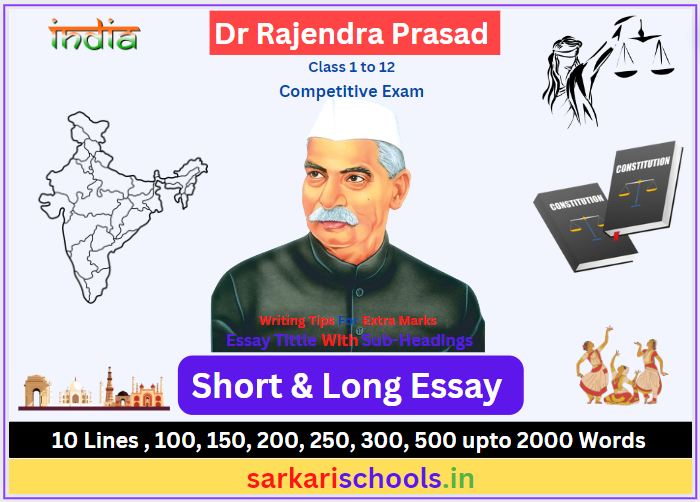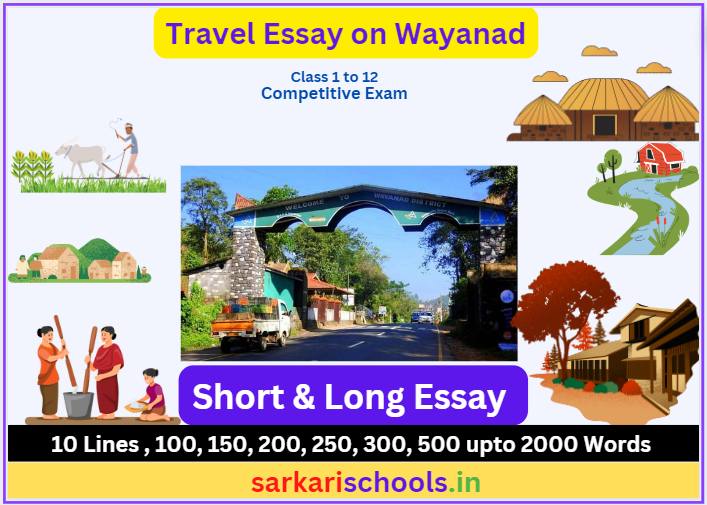Explore the life and contributions of Dr. Rajendra Prasad in this enlightening Dr Rajendra Prasad Essay in English. Learn about the significant role played by this eminent leader in India’s independence movement and his historic tenure as the first President of the nation.
| Aspect | Information |
|---|---|
| Full Name | Rajendra Prasad Srivastava |
| Date of Birth | December 3, 1884 |
| Date of Death | February 28, 1963 |
| Birthplace | Ziradei, Bihar |
| Education | University of Calcutta, Oxford University |
| Political Affiliation | Indian National Congress |
| Major Movements | Salt Satyagraha (1930), Quit India (1942) |
| Ministerial Role | 1st Minister of Food and Agriculture (1947-48) |
| President of Constituent Assembly | 1947-1950 |
| First President of India | 1950-1962 |
| Re-elected as President | 1957 (served two full terms) |
| Legacy | Bharat Ratna recipient, Educational Reformer |
| Notable Contributions | Freedom Movement, Constitution Framing |

Dr Rajendra Prasad Essay in English
Early Life and Education
Born on December 3, 1884, in Ziradei, Bihar, Rajendra Prasad, initially named Rajendra Prasad Srivastava, belonged to a Chitraguptavanshi Kayastha family. Despite facing personal hardships, including the loss of his mother at a young age, Prasad excelled in his education. After completing traditional elementary education, he attended T.K. Ghosh’s Academy in Patna and secured first place in the entrance examination to the University of Calcutta.
Student Life and Academic Achievements
Starting as a science student at Presidency College, Calcutta, in 1902, Prasad later shifted his focus to arts. He graduated with a first division in Economics from the University of Calcutta in December 1907. His academic prowess earned him a scholarship, and he continued his studies at Eden Hindu Hostel.
Career Beginnings as a Teacher and Scholar
After completing his M.A. in economics, Prasad served as a professor of English at Langat Singh College in Muzaffarpur, Bihar. His passion for education led him to become the principal. However, his interest in law prompted him to undertake legal studies at Ripon College, Calcutta, in 1909. Simultaneously, he worked as a Professor of Economics at Calcutta City College.
Legal Career and Academic Contributions
Prasad’s commitment to the legal profession was evident when he passed the master’s in law examination in 1915 and won a gold medal. He later earned his Doctorate in Law from Allahabad University. Joining the High Court of Bihar and Odisha in 1916, he became one of the first members of the Senate and of Patna University in 1917. Prasad’s influence extended to Bhagalpur, where he practiced law in the renowned silk town.
Role in the Independence Movement
Prasad played a crucial role in the Indian National Congress, formally joining in 1911. His association with Mahatma Gandhi began during the Lucknow Session of the Congress in 1916. Dedicated to the freedom movement, Prasad actively participated in events like the Champaran Satyagraha and the Quit India Resolution. His commitment to relief work during natural disasters showcased his leadership and humanitarian values.
Political Career and Congress Leadership
Elected as the President of the Indian National Congress in 1934 and again in 1939, Prasad continued to be a stalwart in the political arena. The Quit India Resolution in 1942 led to his arrest, and he spent nearly three years in incarceration. Following his release in 1945, Prasad assumed a pivotal role in the Interim Government of 1946 and became the President of the Constituent Assembly.
Presidential Legacy and Diplomatic Role
On January 26, 1950, Prasad was elected as the first President of India, marking a historic moment in the country’s journey to becoming a republic. During his tenure, he set a tradition of non-partisanship, emphasizing the importance of education and contributing to diplomatic relations worldwide. Remarkably, he was re-elected for two consecutive terms in 1952 and 1957.
Retirement and Legacy
After serving 12 years as President, Prasad announced his retirement in 1962. He returned to Patna and passed away on February 28, 1963, leaving behind a legacy of leadership, dedication to education, and significant contributions to India’s independence. Posthumously, he received the Bharat Ratna, India’s highest civilian honour, and his impact on the nation’s political and academic landscape is still remembered today.
Essay on Dr Rajendra Prasad in english






